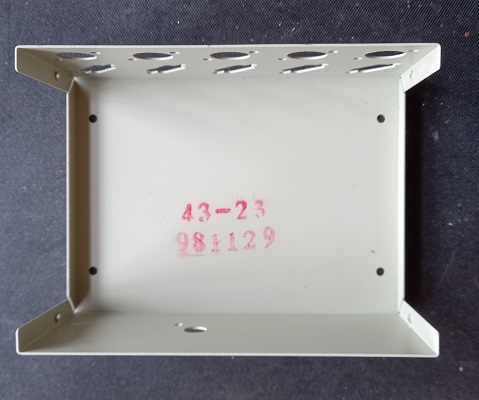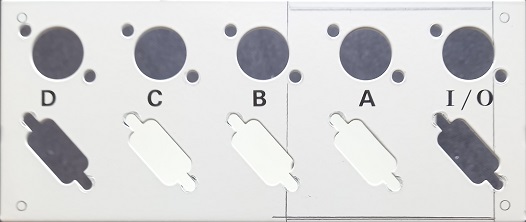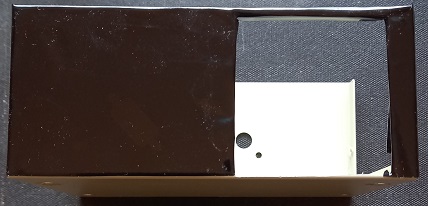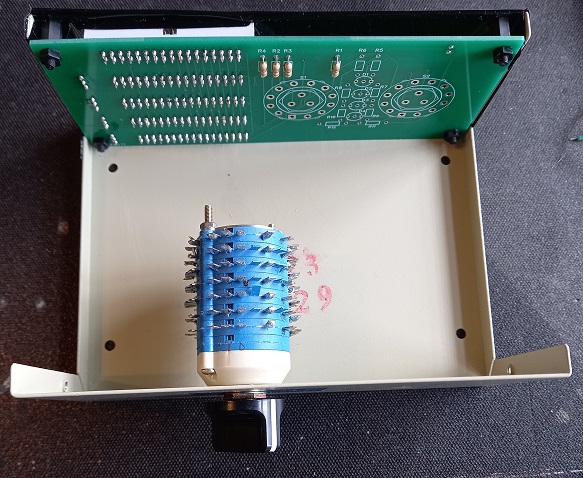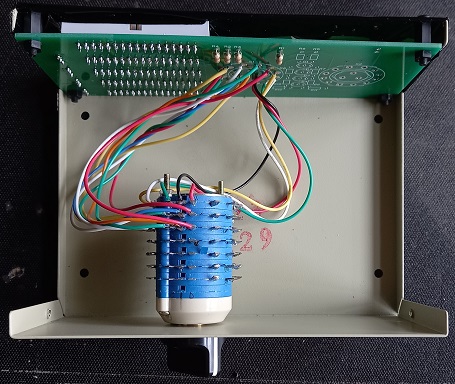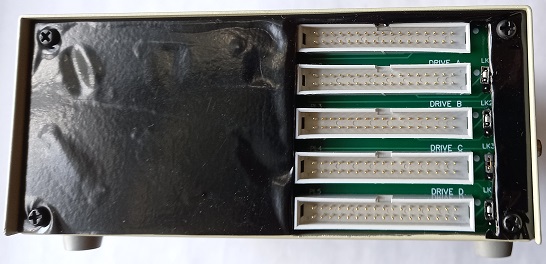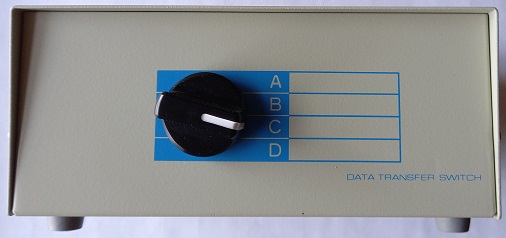| BBC Micro Disc Drive Switcher | |
|
Here at the Archive we come across a range of different disc sizes and formats. Not only that but we also receive a range of disc image types. Recently the Archive has invested in a GreaseWeazle, which can read protected DFS format floppy discs and save these as HFE images which preserve the protection. To read HFE disc images and convert them to SSD images where possible, the Archive uses a GOTEK floppy drive emulator. This has been built into a spare, self-powered 5.25" floppy drive enclosure and is connected when needed. Swapping disc drives in this way is a tedious process and could cause damage to the connectors on the BBC computers used. The Archive mainly uses BBC Master computers complete with Retroclinic Datacentres to make images to preserve. The Datacentre is used to export the images as SSD/DSD files. The main archiving machine has dual 40/80T 5.25" floppy drives permanently attached. 5.25" is the de facto standard for educational software on the BBC range. 3.5" floppy discs are also encountered aimed at the BBC Master Compact range or the Archimedes range of computers, where they run under emulation. A second BBC Master computer was set up with 3.5" and 5.25" floppies connected using a Watford Electronics Duck, a device which takes two single drives and combines them to make a single dual drive. This machine is used to make ADFS disc images from 3.5" floppy discs using OmniFlop on a Windows XP PC. With the introduction of the GreaseWeazle device a GOTEK floppy drive emulator was needed to be permanently available and the secondary BBC Master computer was the target machine. What was needed was a switch which would swap between a 3.5" drive, a 5.25" drive and a GOTEK. StarDot Forums member ChrisO was able to provide a solution to the Archive's problem. ChrisO had designed and had made a PCB which allowed him to attach 4 different disc drives to a BBC computer at the same time and to switch any of them to be drive 0/2 or drive 1/3. His unit behaved as a very versatile dual drive. This was not exactly what the Archive needed, however. ChrisO was able to supply a blank PCB and this was adapted to fit the Archive's needs. No changes were made to the PCB itself. The components and switch needed to choose drive 1/3 and to light LEDs were omitted and only those components needed to switch 1 of 4 disc drives as drive 0/2 were used. This article documents the building of this drive switcher.
|
|
|
The Archive had a spare, obsolete, 4 position Data Switch which was suitable to recycle for this project. Fortunately the PCB supplied fitted inside the switch box exactly. The first job was to strip the switch box to leave the skeleton box.
The next stage was to cut out a rectangle to allow access to the drive connectors on the PCB and also the drive number links next to each drive connector and to drill holes for mounting the PCB to the rear of the switch box.
The rectangle was cut out and the holes drilled.
Afterwards the rectangle was filed square and all burrs removed. The rear panel was covered with black, self-adhesive vinyl to cover the holes and trim the rectangle cutout.
After this, the PCB was populated with the pull-up resistors, R1 to R4, the 34-way box connectors and the 3-pin drive selector links. The PCB was then fastened to the rear panel using 3mm bolts and 6mm standoffs. The multi-pole 4-way switch was also fitted.
Jumper wires were soldered from the switch contacts on the PCB to the rotary switch.
These jumper wires were coded yellow = drive A, white = drive B, green = drive C and red = drive D. Three rotors on the switch were needed. After wiring the switch the case was re-assembled and the drive selector jumpers were placed on the links. All drives were set to be drive 0 as that was how they were originally set up.
This switch box will be a very useful addition here at the Archive and also when visiting various shows and events. It will allow a range of disc drive types to be used without frequent dismantling and reassembly. The secondary archiving machine now has a 3.5" drive permanently connected as drive 1/3 (or drive 5 under ADFS) and any one of a 3.5", an 80T 5.25", a 40/80T switchable or a GOTEK connected as drive 0/2 (or drive 4 under ADFS). |
|
| Home | |
| © 2018 - 2025 flaxcottage.com | |
